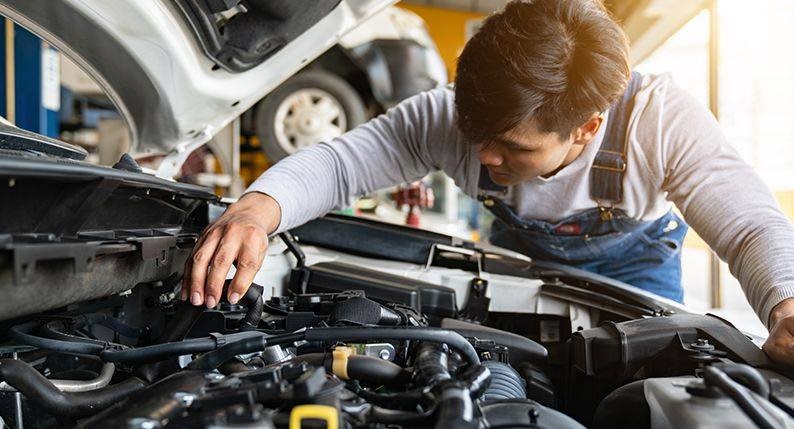All Categories
Featured

[/image]

Preserving your lorry's tires is important to make certain a smooth, risk-free, and efficient driving experience. 2 vital solutions that are frequently ignored yet have a substantial influence on tire durability and efficiency are tire turning and placement. These solutions help keep your car running efficiently and prevent unequal tire wear that can affect both security and gas economy. Let's study what tire rotation and placement are and why they're essential for your vehicle.
What Is Tire Rotation? Tire turning is the process of moving your tires from one setting to an additional to ensure they use equally. Given that your automobile's tires work at different prices relying on their setting (front tires versus back tires), turning them frequently helps to disperse the wear equally, leading to a longer lifespan for your tires.
Tires on the front axle often tend to wear faster than those on the back axle, especially in front-wheel-drive cars, where the front tires manage both steering and power. On the various other hand, back tires could use unevenly depending upon the car's weight distribution and driving problems. By rotating your tires every 6,000 to 8,000 miles (or as recommended by the supplier), you'll ensure a more well balanced wear pattern.
What Is Tire Placement? Tire positioning, additionally referred to as wheel placement, describes adjusting the angles of your automobile's wheels to the producer's requirements. Correct alignment guarantees that your tires are aiming in the right direction, and it assists optimize tire life and enhance vehicle handling. There are three major aspects of positioning: camber, wheel, and toe.
Camber describes the tilt of the tires from the front of the automobile. If your tires are tilted excessive inward or outside, it can cause unequal wear. Caster describes the angle of the steering axis when viewed from the side of the automobile. This affects the security of the guiding, particularly when driving straight. Toe describes the angle at which the tires direct inward or outside when seen from above. This influences exactly how your lorry tracks on the road. An appropriate placement guarantees that all four tires are pointing right ahead and are angled appropriately. Misalignment can arise from striking holes, aesthetics, or simply from the wear of suspension parts with time.
Why Tire Turning and Positioning Issue. Extended Tire Life. Both tire rotation and positioning help prevent irregular tire wear. When your tires use evenly, they last much longer, which can save you money over time by reducing the need for premature replacements.
Improved Security. Proper tire turning and positioning boost lorry stability and handling. Misaligned tires or erratically used tires can adversely influence your capability to steer and stop your automobile, especially in emergency scenarios. Regular maintenance ensures your tires carry out optimally, giving a much safer driving experience.
Better Gas Effectiveness. If your tires are not aligned appropriately, they may drag against the road surface area, triggering resistance. This additional rubbing can reduce fuel effectiveness, creating your vehicle to take in even more gas. Regular tire alignment ensures that your lorry relocates effectively, improving gas mileage.
Enhanced Convenience. Imbalance or erratically worn tires can cause a rougher ride, as your cars and truck may pull to one side or cause vibrations. By keeping your tires rotated and aligned, you'll delight in a smoother and more comfy driving experience.
Signs That Your Tires Need Rotation or Placement. It's vital to remain sharp for any indications that your tires require rotation or positioning. Watch out for these usual indicators:
Irregular Tire Use: If you see that a person tire is substantially a lot more used than the others, it might be time for a turning or positioning. Guiding Pull: If your car pulls to one side while driving straight, this might show imbalance. Resonances: If you feel vibrations in the steering wheel or the cars and truck itself, maybe a sign of misalignment or irregular tire wear. Squealing Tires: Uncommon tire sound might additionally indicate improper placement or the demand for a tire turning. Just how Usually Should You Rotate and Align Your Tires? Tire rotation must generally be done every 6,000 to 8,000 miles or as defined in your car's proprietor's handbook. It's an excellent concept to turn your tires throughout every oil modification, as this will certainly help you remain on top of routine maintenance.
As for positioning, it does not need as regular service. Generally, alignment should be examined a minimum of annually or whenever you observe concerns like drawing to one side or resonance. You might also require positioning if you've struck a huge gap or curb, which can toss your wheels out of positioning.
Verdict: Keep Your Tires in Top Forming. Tire rotation and positioning are vital solutions that keep your lorry running smoothly, securely, and effectively. By putting in the time to have your tires revolved and aligned routinely, you're purchasing your car's performance and durability, while likewise boosting your safety when traveling. Keep positive with tire maintenance, and your vehicle will certainly thanks with better fuel economic climate, enhanced handling, and expanded tire life.
Latest Posts
Take Advantage of Special Auto Repair Offers in Chicago at Montclare Auto Repair
Secure and Improve Your Home with Weathercraft's Exterior siding Solutions
Explore Budget-Friendly Auto Repairs with Montclare’s Monthly Service Specials
More
Latest Posts
Take Advantage of Special Auto Repair Offers in Chicago at Montclare Auto Repair
Secure and Improve Your Home with Weathercraft's Exterior siding Solutions
Explore Budget-Friendly Auto Repairs with Montclare’s Monthly Service Specials